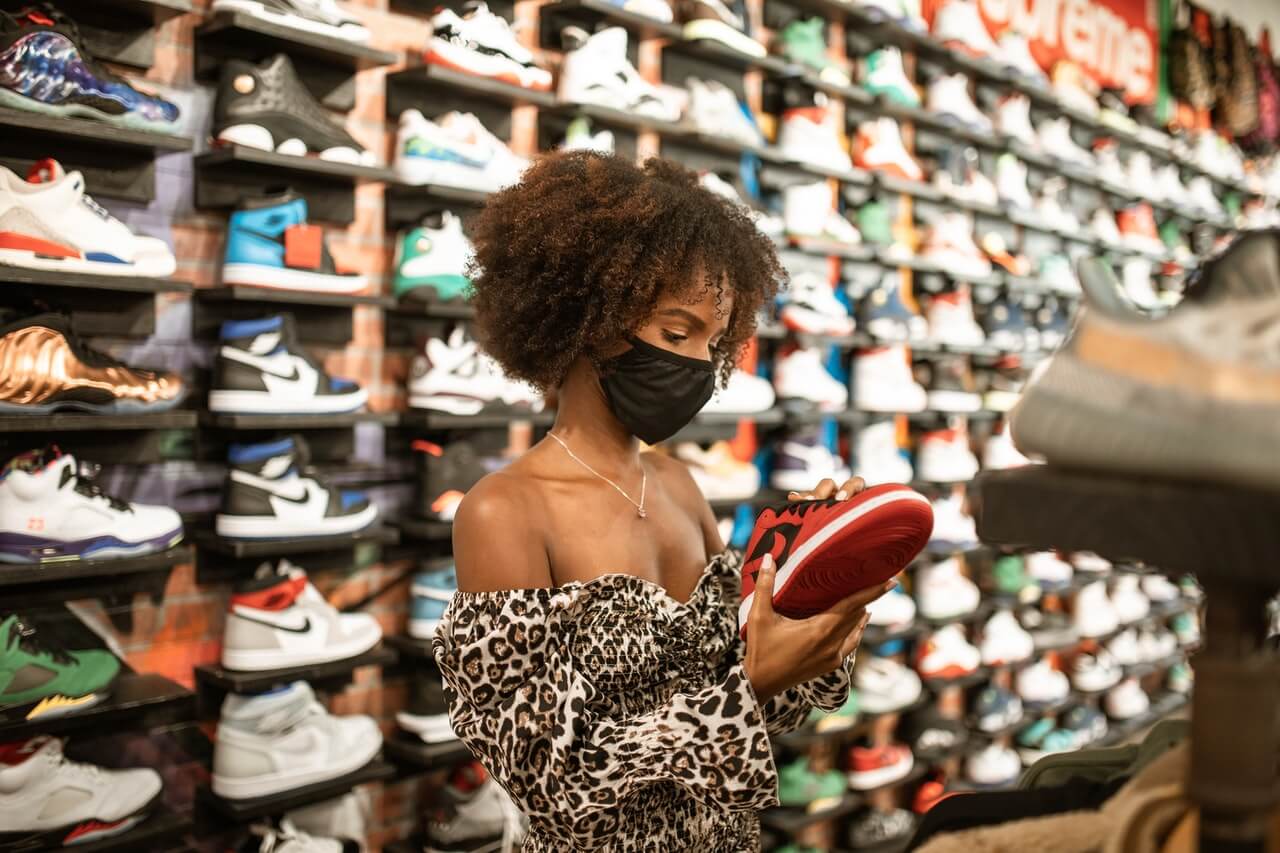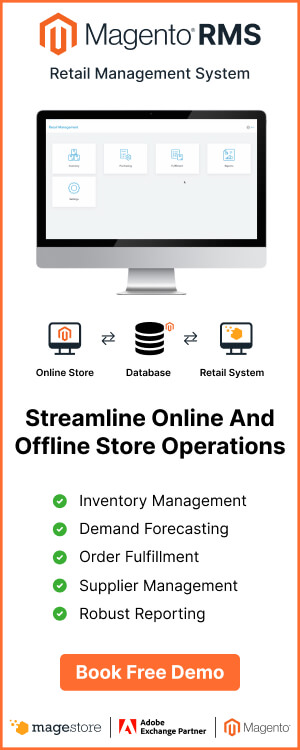COVID-19 has produced significant changes in physical activity levels worldwide. Customers are more health-conscious, daily exercise time has increased by 43% since the pandemic broke out. To win in the new normal, sports retailers must adapt to the changing landscape. The successful sportswear retailers after COVID-19 will be the ones who take intelligent steps to capitalize on opportunities and recognize new sporting goods industry trends.
This article discusses the future developments in sports retail and 9 critical trends in 2021 so you can plan for your business.
Industry definition
Sports apparel retail is the one who sources their products from sportswear manufacturers and wholesalers and sells to the general public via retail stores. Mass merchandisers, department stores, and retailers that exclusively sell apparel are not included in this industry.
Sporting goods include:
- Apparel
- Footwear and other goods and accessories
- Bicycles
- Exercise and fitness equipment
- Camping equipment
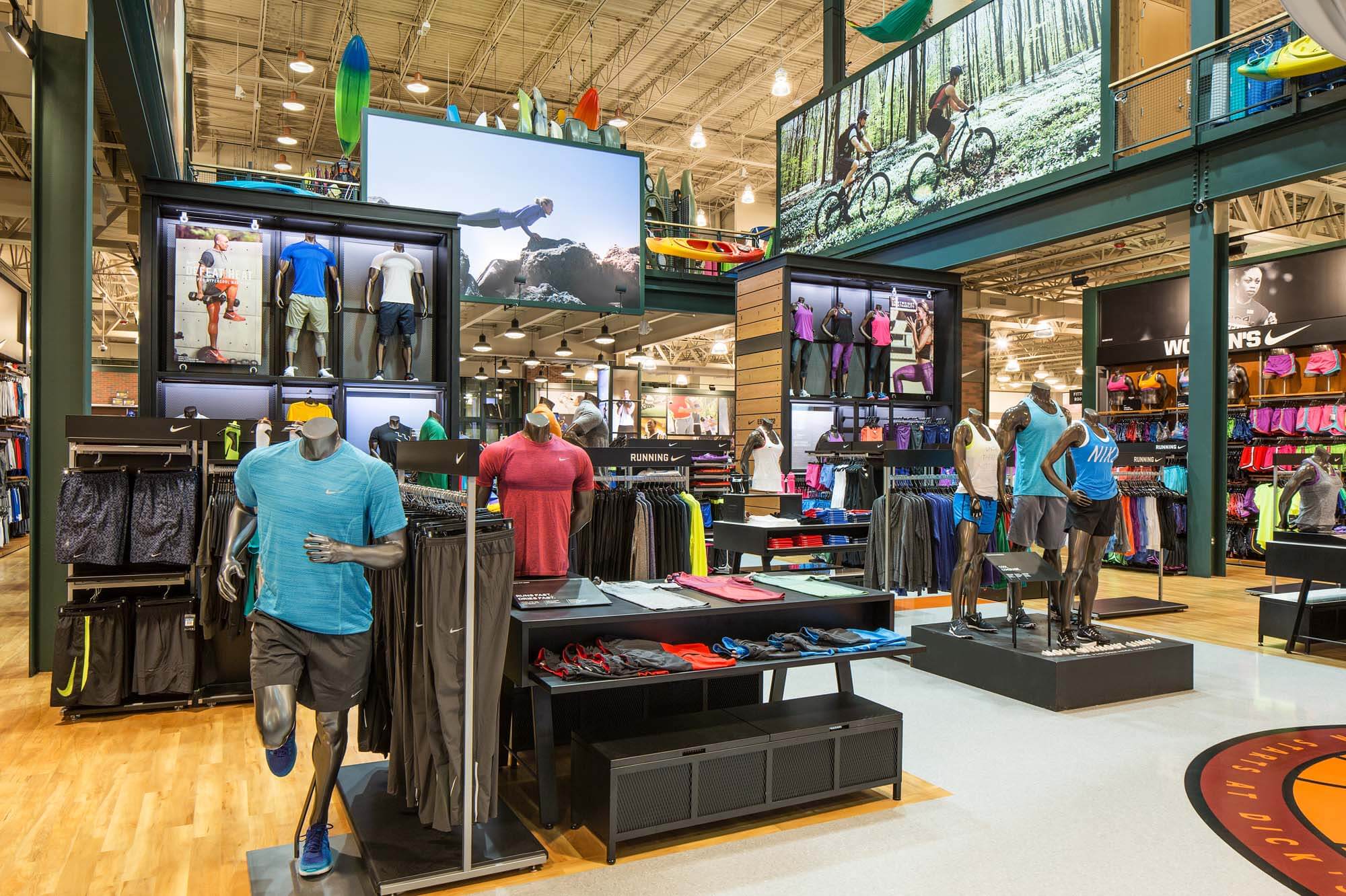
Sporting goods outlook
The big unknown for 2021 is the trajectory of COVID-19. However, despite the slow increase in vaccinations and the uncertain backdrop caused by the second wave of COVID-19 outbreaks, 2021 opens up to a more positive outlook. The post-COVID-19 world is characterized by:
- Shorter demand cycle
- Localization
- More volatility
- Direct-to-consumer models, especially eCommerce
- More automation
The biggest challenges
- Disrupted supply chain
- COVID-19-related issues such as team sports and physical activities
Opportunities
- A constant rise of individual indoor and outdoor sports
- Return of major sporting events (Olympic and Paralympic Games)

Sportswear categories analysis
Again, different sports are affected to varying degrees depending on how you approach them in a locked environment.
Categories that performed well in 2020 are expected to remain popular in 2021. Individual outdoor sports, home workouts, eSports, and virtual races increase. As a result:
- Women’s clothing is an emerging and dominant opportunity thanks to home fitness activities like pilates, yoga, and running.
- Sports equipment manufacturers such as bicycles and digitally-enabled fitness equipment can perform exceptionally well.
Categories with reduced or limited participation are likely to recover partially but at a lower rate.
- Team sports and indoor sports have decreased due to the cancellation or postponement of sporting events. So, sportswear retailers are more resilient than the apparel industry.
Sporting goods market data

Sporting goods is one of the major global markets and will continue to grow in the coming years. WFSGI sporting goods industry analysis by McKinsey expects better market conditions with a 64% growth chance:
- The global sports equipment retail market has a total revenue of $149.6 billion in 2020, representing a compound annual growth rate (CAGR) of 0.1% from 2016 to 2020.
- The global sportswear market will generate annual sales worth more than $200 billion by 2024.
- Online shopping will continue to gain a larger market share than in-store shopping. An estimated 40% of customers order sports goods online.
- The Chinese market is the only exception when it comes to manufacturing. CAGR expanded an average of 16.5% a year from 2015 to 2019.
- The annual U.S. sportswear and swimwear market revenue will grow by approximately US$40 billion from 2020 to 2025. And so, it’s no surprise that Nike, the American sportswear manufacturer, has become the world’s most valuable and best-selling sports brand.
9 upcoming sporting goods industry trends
1. A shift from brick-and-mortar to omnichannel shopping
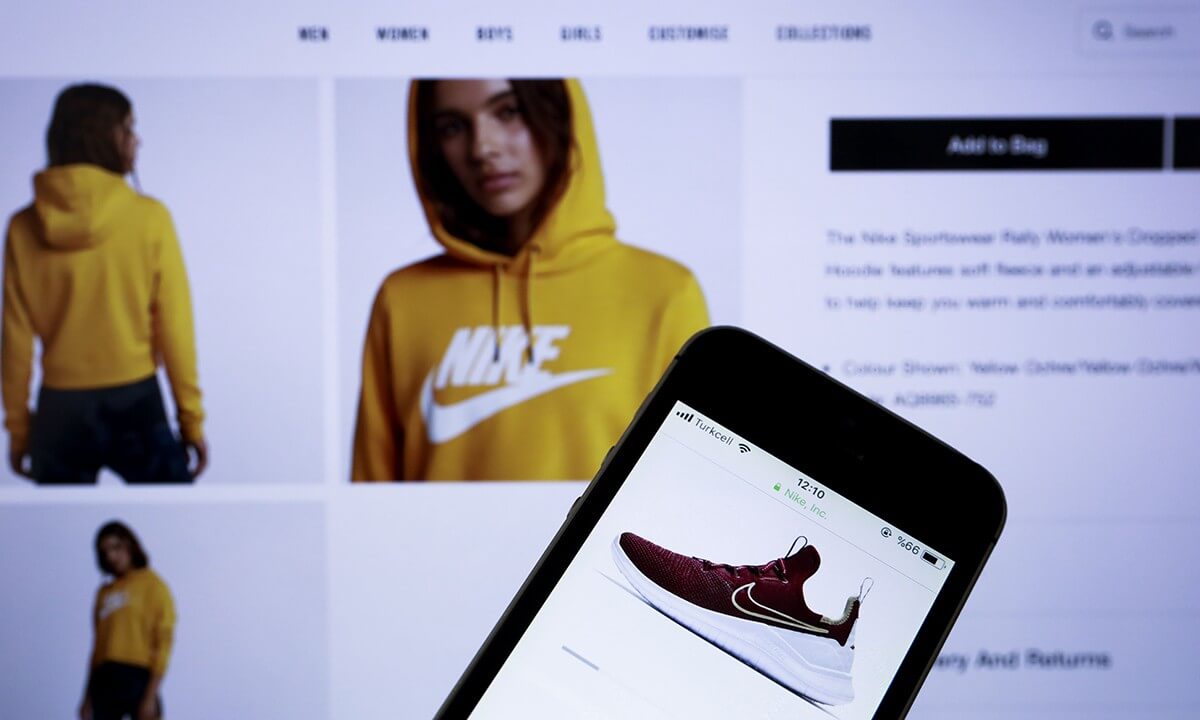
Due to store closures related to COVID-19, many sports retailers develop online sales, and many first-time online shoppers will stick with their new habits. As online retail has increased, customers are beginning to discover and get used to the ease of online shopping.
- Will customers buy their sportswear in a store or online?
- If online, will customers choose a sports retailer like Decathlon, go straight to the manufacturer’s website, or a marketplace like Amazon?
- If buying in-store, will the customer go to a store that sells their favorite brand, a supermarket, or right on the street?
The sports retail market in 2021 may be a mixture of all of these. However, this shift requires a fundamental change in the company’s mindset, expertise, and structure. Combining online and offline will require a change in marketing strategy to retain old customers and reach target customers. As a sportswear retailer, you need to adapt your business model quickly to:
- Put digital commerce at the center
- Accelerate direct-to-consumer
- Provide an integrated and seamless omnichannel experience
2. Focus on customer’s entertainment and experiences more than sales
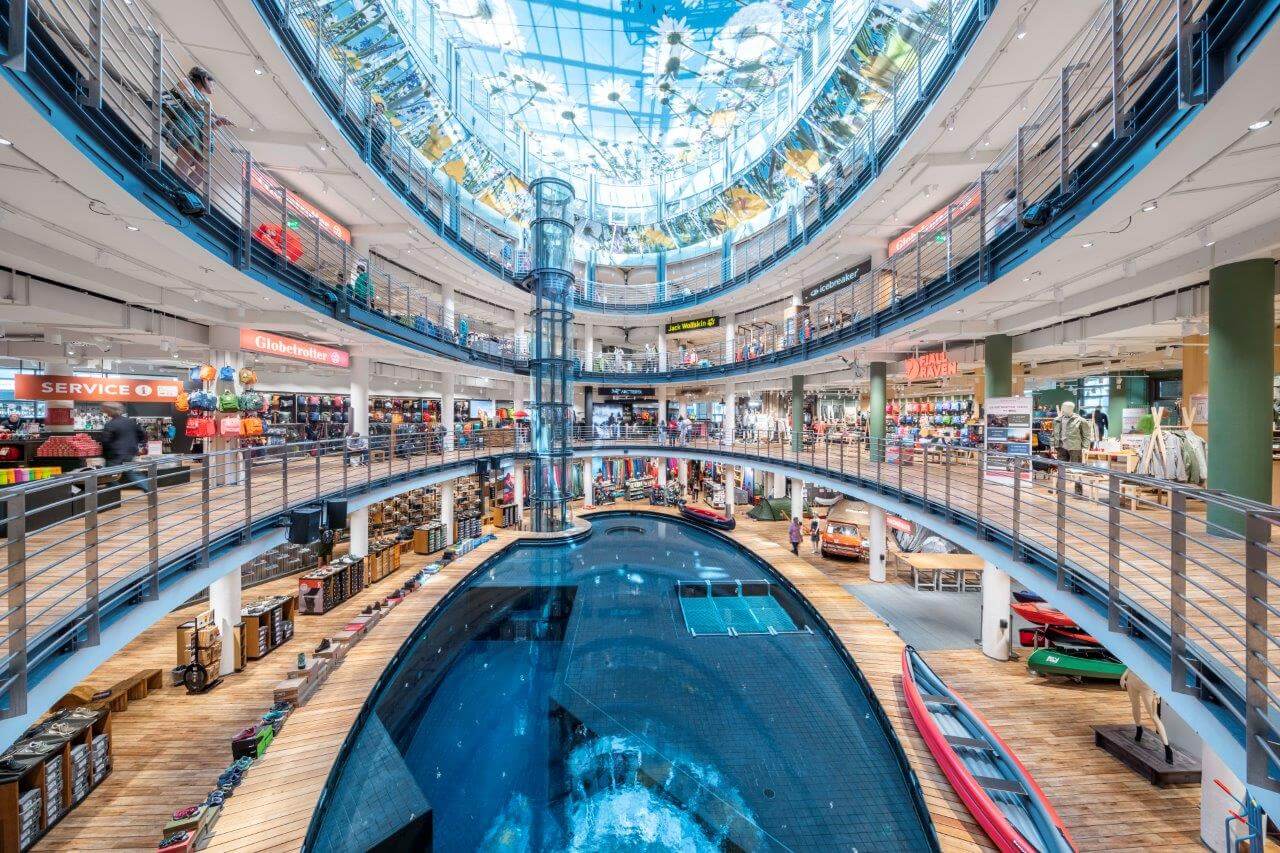
Customers no longer go to stores to buy something because they can do it online. Instead, customers care about the in-store experience, which is different from shopping online.
Sports retails will transform into entertainment and experience centers rather than stores that only sell products. The focus is gradually changing from POS (Point of Sale) to POE (Point of Engagement). Stores of the future will use experiences and entertainment to drive sales.
But how does this manifest in a retail store? Brands like Globetrotter and Nike are experimenting with different formats to improve engagement and entertainment. Their in-store customers can:
- Try on new shoes on the basketball courts
- Try on clothes and see themselves on the high-tech touch screen
- Try canoeing in a large tank of water
- Test explorer devices in an Igloo with temperatures below 0
- Create personalized shoes at the 3d printer stand
- It’s like a day at an amusement park, where customers enjoy different rides at each stop at the restaurant. The sporting goods industry trend is to combine sports centers with healthy dining restaurants for entertainment and fun, which will eventually translate into sales.
3. Apply modern technology
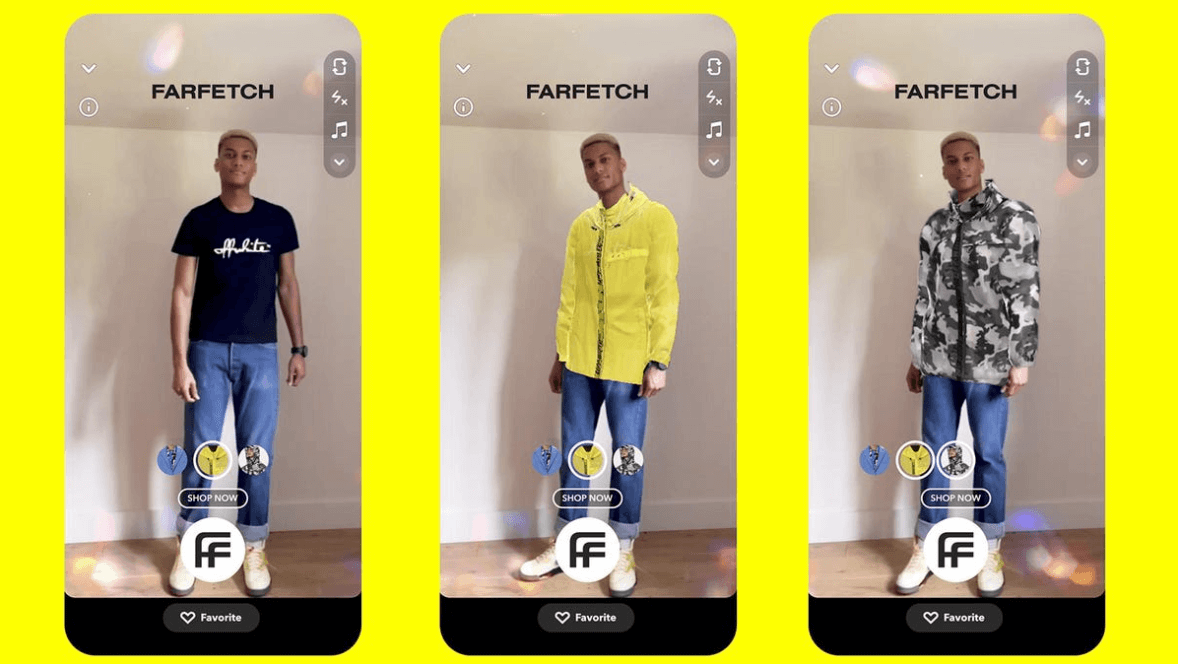
If you want to be the winner of the game-changer, advanced technology is a prerequisite. As a result, modern technology is now an integral part of both online and physical stores. Common and valuable technologies in modern sports retail include:
- Robotics: Replace humans in order fulfillment and warehouse management at the back office. Sensor-embedded shelves will track inventory and replenish it promptly.
- VR & AR: Enhance customer experience like trying on a new outfit when browsing a store or which shoes suit them best
- Chatbots with AI: Support and enhance customer online journey
- Fulfillment systems: Connect online to offline through sports and outdoor POS systems
However, you’ll need significant investments to equip all these technologies. If your business is small, you can integrate and take advantage of the most advanced technologies through an integrated company. In the meantime, an open-source POS system like Magento is affordable and ready to expand with your business growth in the future.
4. Leverage big data to understand customers

Sports retail will become a very fierce and no longer easy battle. Sports retail customers have changed a lot and become increasingly demanding over the past year. With the rapid development of technology and mobile phones, customers have access to all product information and a wide range of choices at their fingertips. From there, customers expect to:
- Access website 24/7
- Shop easily both online and in a brick-and-mortar store
- Compare to buy sportswear at the most convenient and cheapest place
Artificial Intelligence is changing the retail industry in general and the sports retail industry, helping with data collection, analysis, and reporting. It gives retailers a great tool to serve their customers better, predicting future customer behavior by analyzing the past:
- What are customer needs?
- How will customers act and react?
- How to personalize the customer journey?
By knowing your customers well, you can better use recommendation systems and enrich the shopping experience.
5. Focus on digital marketing
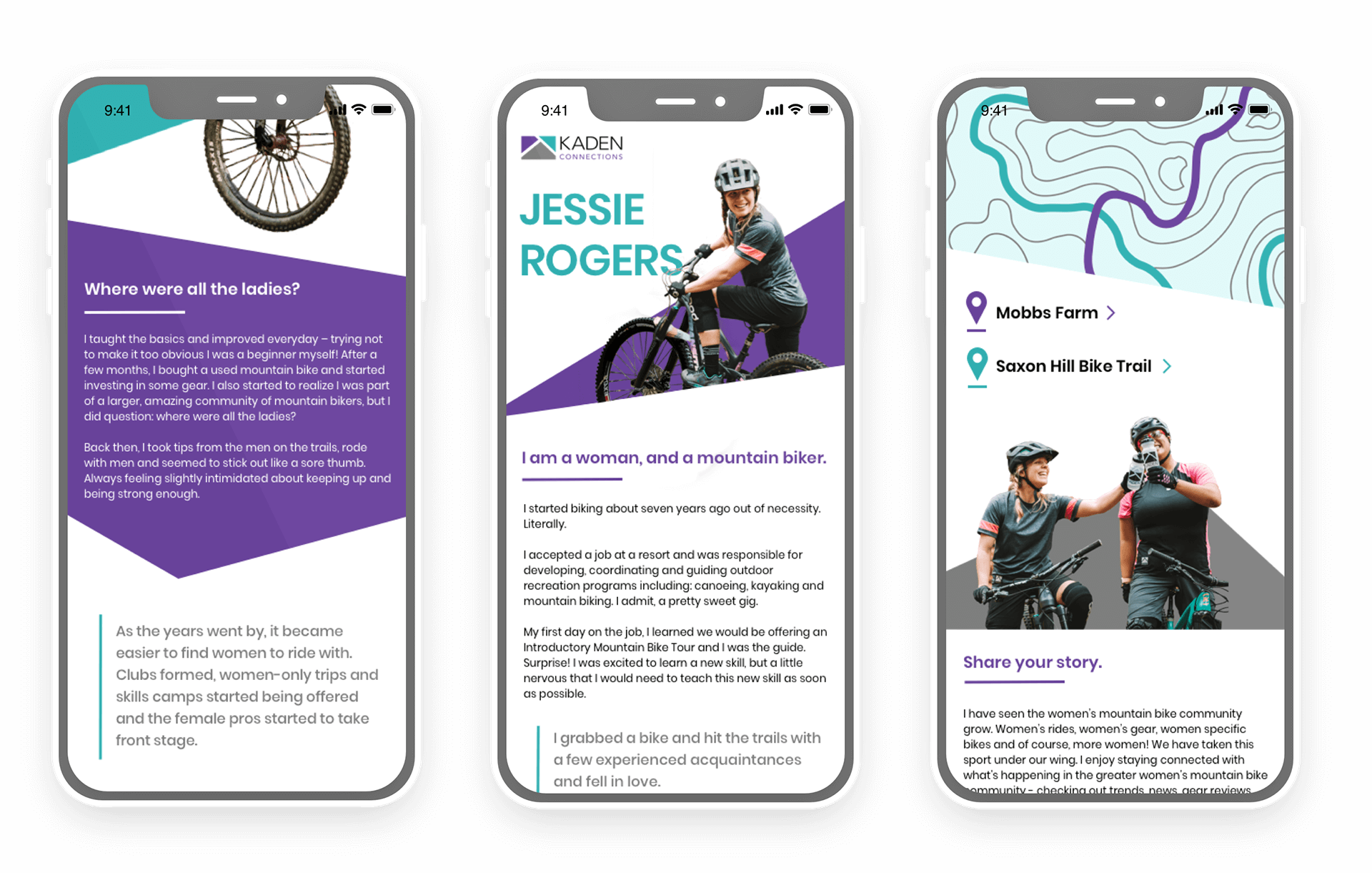
GenZ is gradually becoming the leading consumer group. With technology improvement, key ways to communicate with customers will include:
- Advertisement in magazines and on TV
- Fitness and sports influencers
- Social network
- Storytelling
We recommend 2 marketing activities to reach new customers and stand out:
- Focus on high-visibility content: Sponsor sporting events, leagues, or clubs as customers spend more time online after sporting events are canceled or take place in empty stadiums
- Build engagement, reputation, and awareness: Work directly with sports influencers for much longer reach than with events or associations
6. Care for the environment (recycling and sustainability)
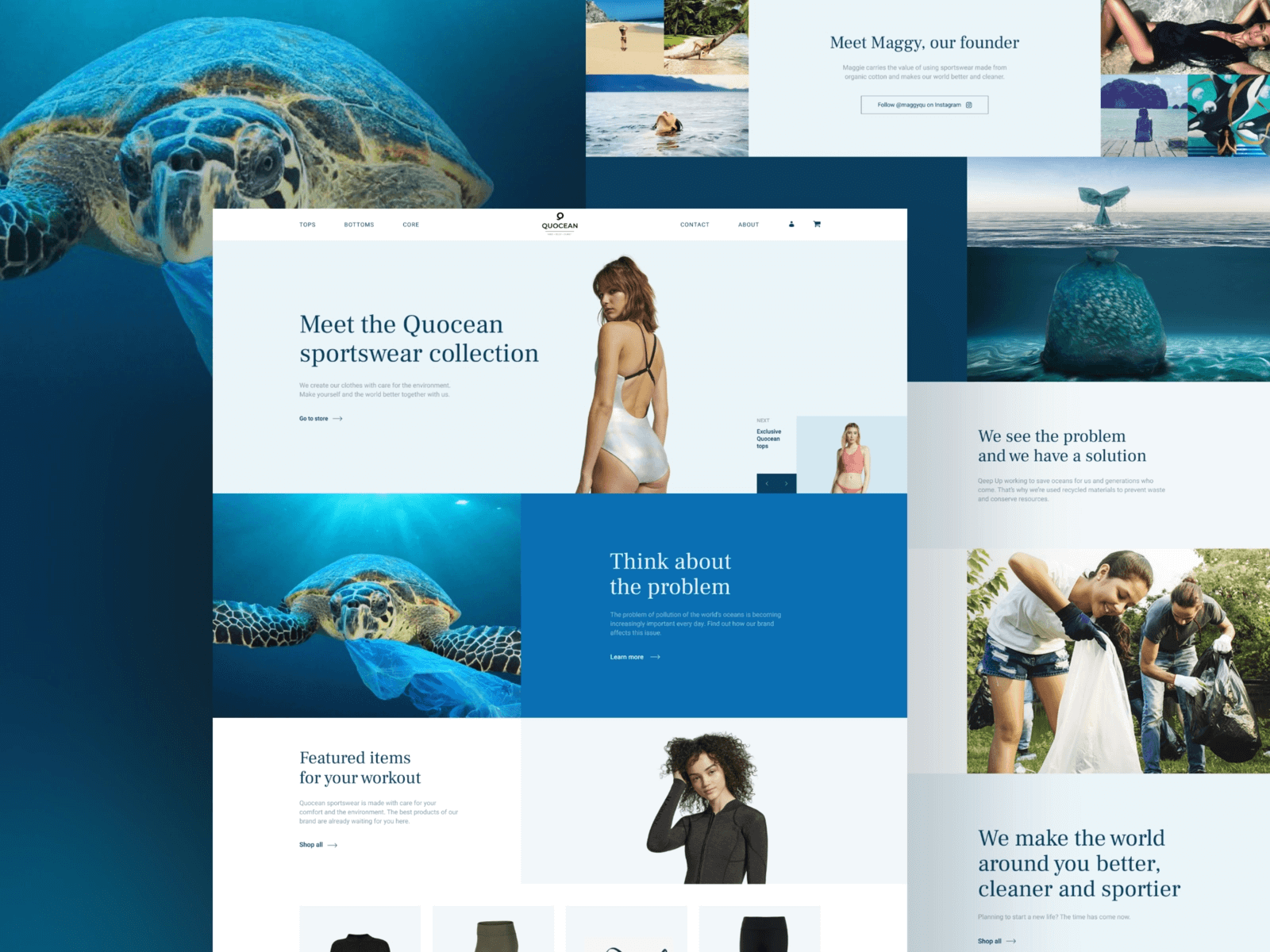
New generations of customers are increasingly moving towards environmental sustainability. As a result, customers expect more products like space hippie shoes by Nike and bags made from the recycled truck canvas by Freitag in retail sporting goods stores.
Therefore, athletic apparel retailers need to pay more attention to this and respond by:
- Introducing more sustainable products
- Ensuring a sustainable supply chain
- Engaging in innovative concepts such as direct-to-consumer circulation
- Designing and manufacturing of recycled products that create an efficient loop system
- Using environmentally friendly materials
7. Combine fashion with everyday wear (Athleisure)
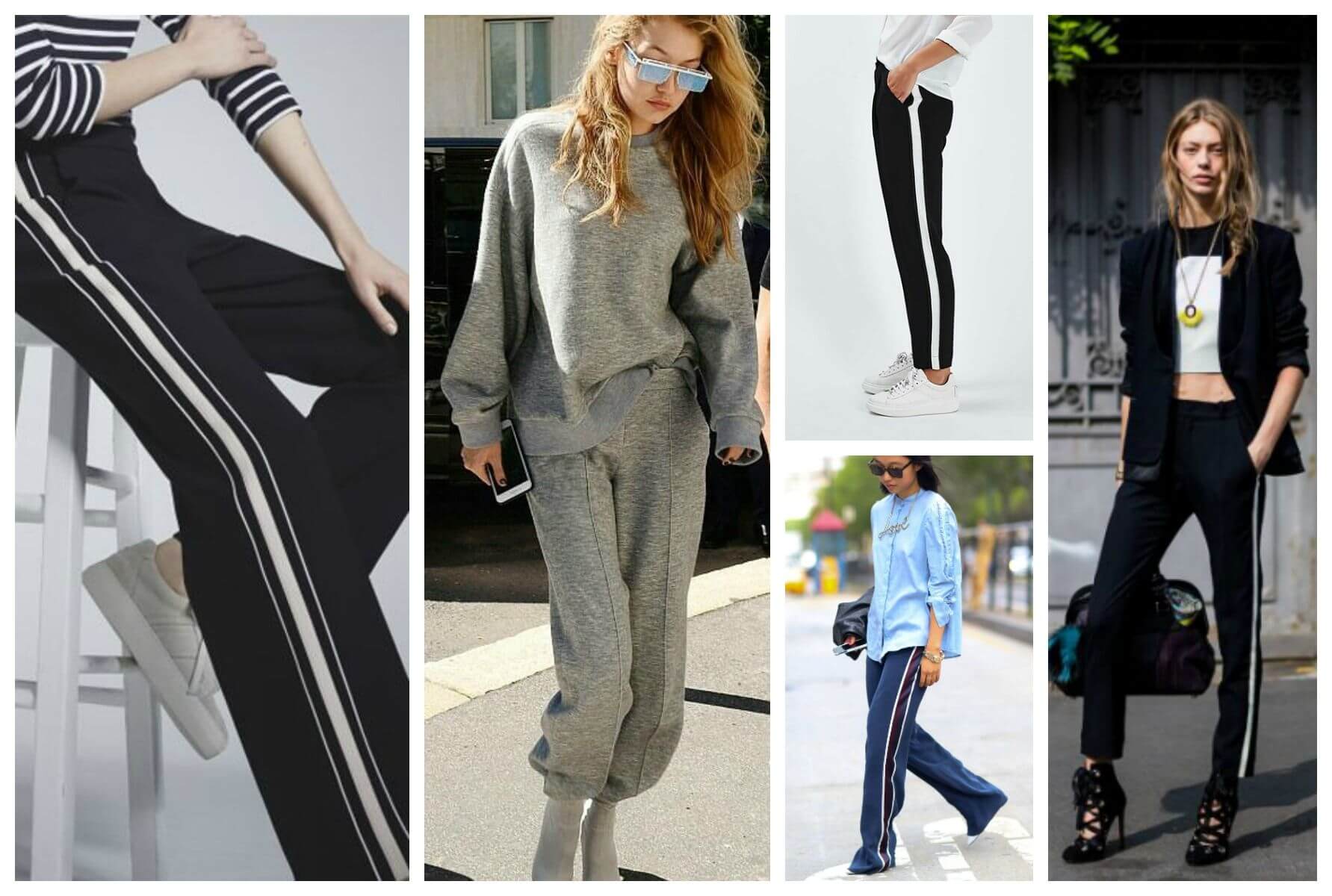
Athleisure was a big trend before COVID-19 and has grown even more vital during the pandemic, especially with working from home customers who expect comfortable, multitasking, and less formal clothes to:
- Blur the line between work and free time
- Accept comfortable wearing in more formal situations
This trend means designing sportswear for other everyday purposes such as going to school, going out, going to work, serving 3 factors:
- Sport
- Fashion
- Daily wear
As fashion brands increasingly enter this segment, sportswear retailers need to leverage their market knowledge and innovation capabilities to respond. Athleisure is highly competitive, so you need a clear value proposition with 3 spearheads:
- Focus on eco-friendly materials
- Design innovation
- Leveraging sports DNA (lifestyle that values health and sports)
8. Change faster to adapt to shorter product life cycles
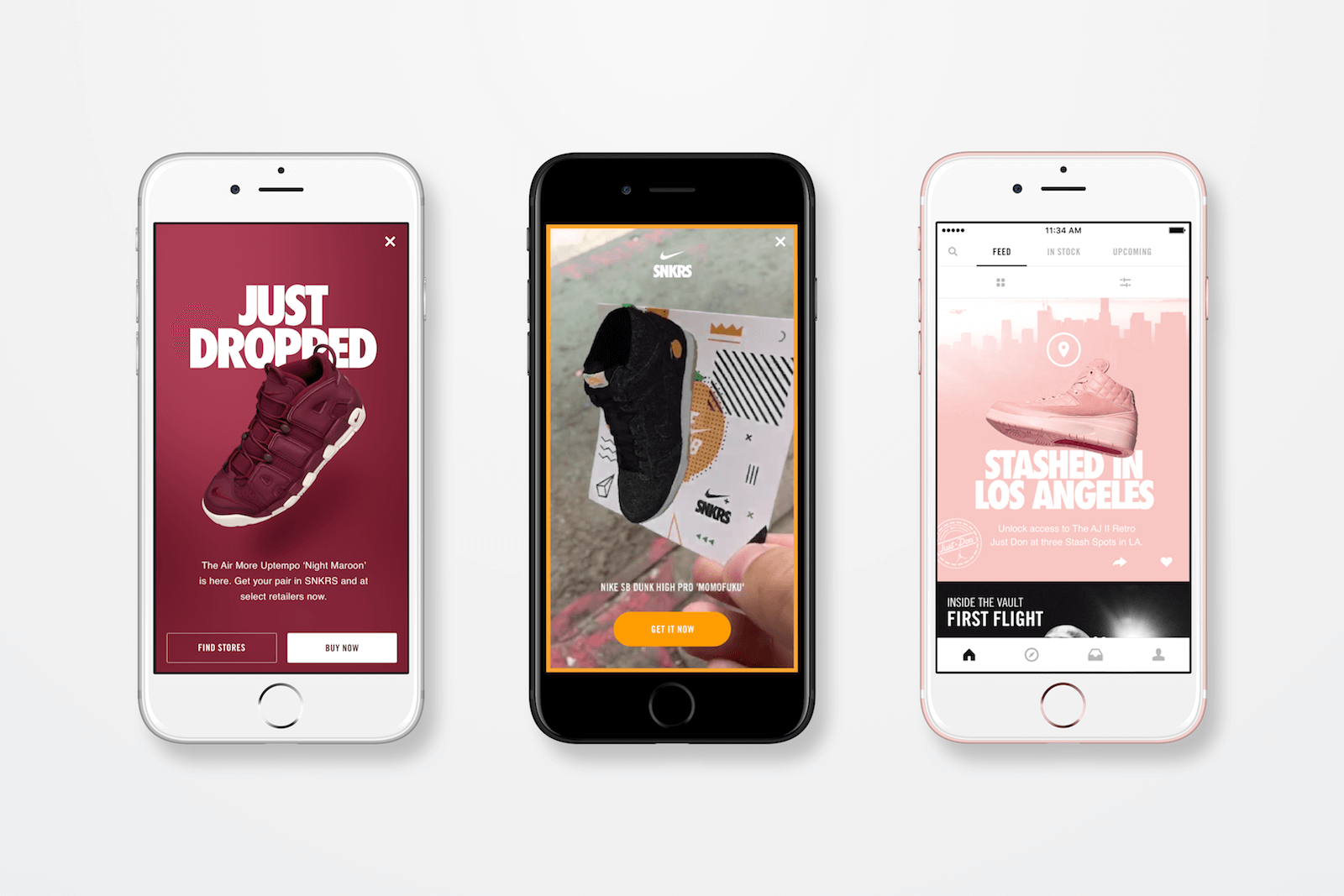
Modern customers want a product that is custom-made for them to express their taste and personality. In addition, just as users tend to change their phones when newer versions come out, customers always want the most modern sportswear and the most fashionable shoes. It means that innovation rates are likely to increase, and product life cycles (PLC) may become shorter.
Therefore, it’s critical to:
- Designing to make products more customizable
- Prepare an MVP product for launch
- Speed up the go-to-market process of products
- Leverage print-on-demand to adjust inventory based on actual sales
- Support and collect customer feedback
- Improve the product throughout its life cycle regularly
9. Compete with manufacturers and increase the relationship with supplier

Many leading sportswear brands such as Adidas, Nike, and The North Face open their stores and compete directly with sports retail to:
- Communicate directly with customers
- Take advantage of brand offers
- Strengthen multi-channel strategy
Thus, sporting goods retailers will need timely merchandise supply, customer service, inventory control, general promotional activities, and in-store sales such as product displays to:
- Reduce the total number of suppliers
- Benefit from reliable delivery
- Raise the level of enhanced customer service provided by key supplier partners
Conclusion
The pandemic drives changes that have a lasting impact on retailers across the sporting goods value chain. COVID-19 has ushered in the new reality, factoring in eCommerce, increased participation in individual forms of sport and exercise, and increased demand for sustainable products. However, this is an excellent opportunity for consumer-centric businesses to adjust their operations.
With a sustainable product and winning in the new environment, sporting goods retailers need to align their capabilities and customer propositions.
